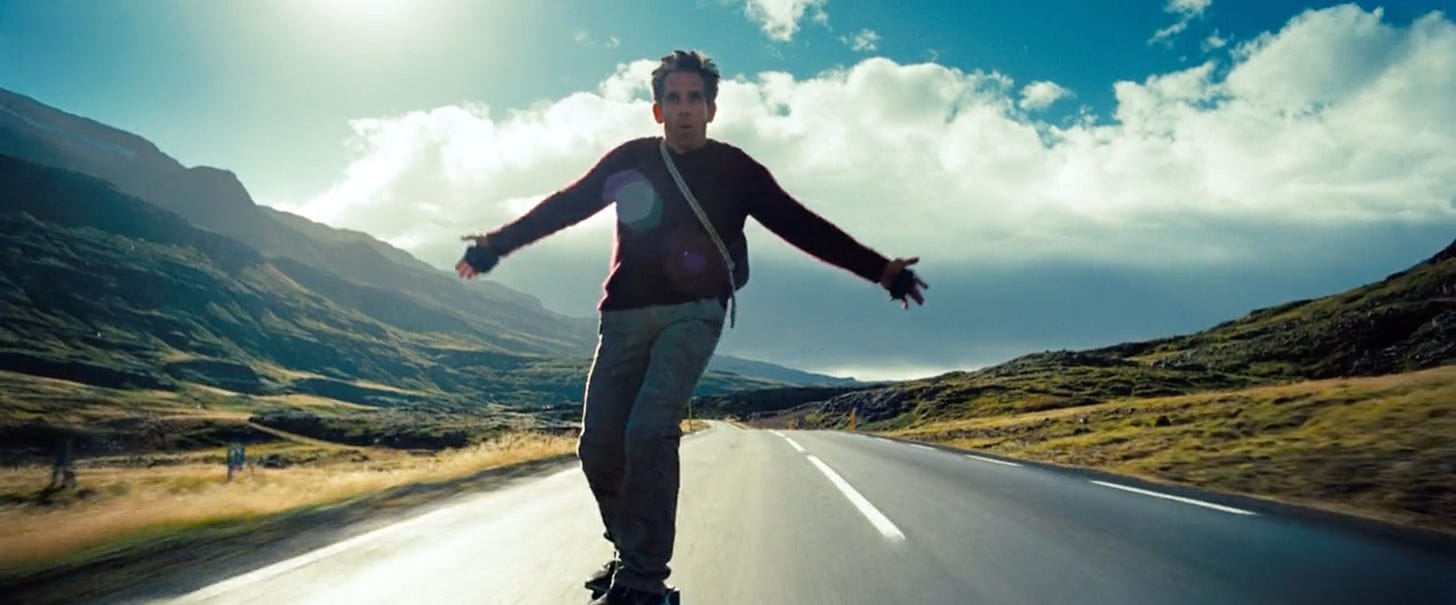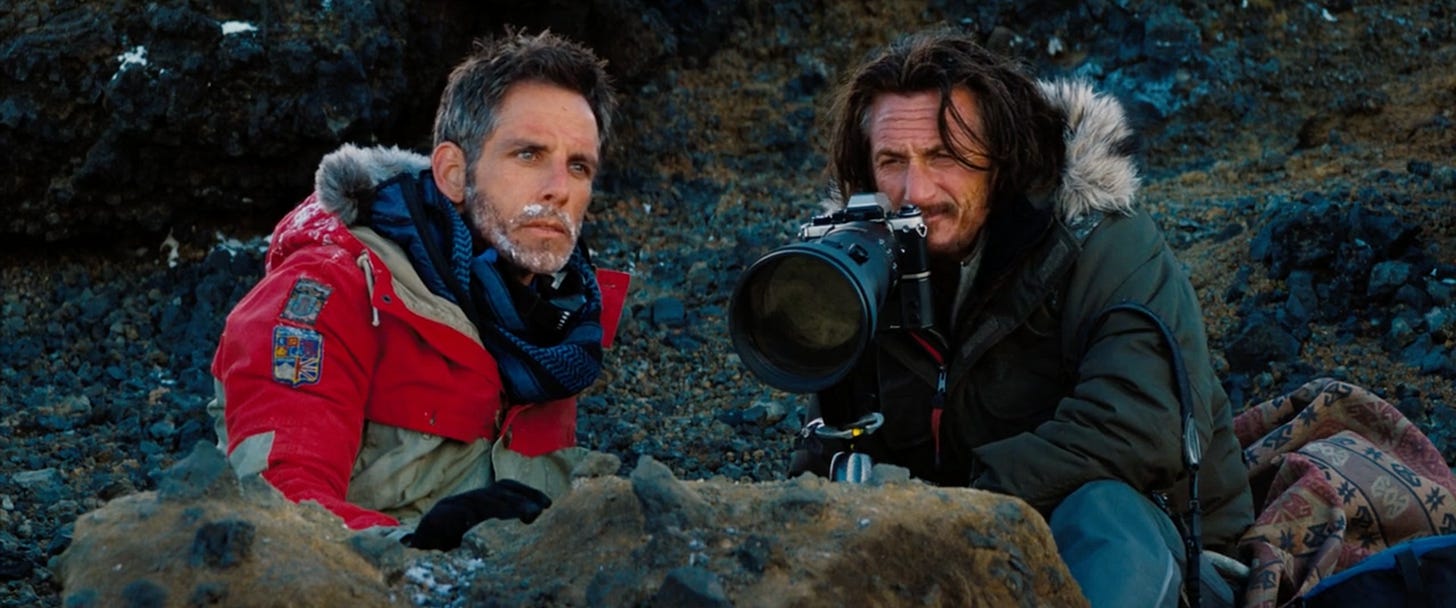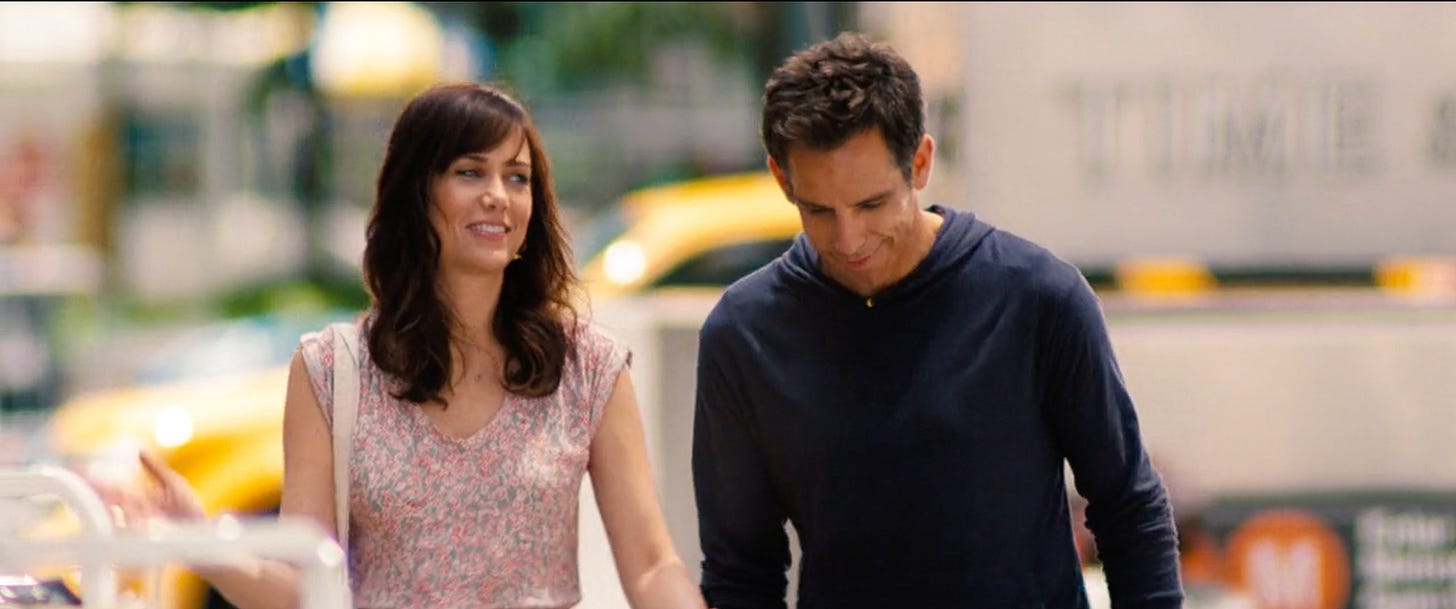The Secret Life of Walter Mitty
“To see the world, things dangerous to come to, to see behind walls, draw closer, to find each other, and to feel. That is the purpose of life.”
Have you ever entered a cinema with no expectations and come out with a powerful feeling you can’t describe? It’s the type of film that you continue to ponder on during your ride back home, leaving you sleepless as you replay the scenes in your head. There’s nothing like it. Back in 2013, I watched The Secret Life of Walter Mitty, and that film definitely made an impact on my 14-year-old, scrawny little self.
In film, (almost) nothing is an accident. Every movement, type of shot, sound, color, and lighting all play one role: to advance the story. For this publication, I thought we could focus on a particular element of the film and analyze how it advances the story.
Let’s examine costume design.
Costume design is an audiovisual language that plays a crucial role in characterization. Through the characters' attire, it can convey their personality, identity, and transformation arc. Some films, such as The Grand Budapest Hotel, Edward Scissorhands, Phantom Thread, and Mad Max, rely heavily on costume design. These movies use wardrobe as a primary tool to capture the audience's attention.
While these films undoubtedly deserve all the praise, I am drawn to the subtle decisions in costume design seen in other films. These choices don't demand admiration but subconsciously enhance your appreciation of the film. The Secret Life of Walter Mitty exemplifies this approach. With nuanced details and gradual wardrobe changes, the costume designer, Sarah Edwards, helps us understand the protagonist's growth and development throughout the story.
Here’s a quick overview of the film:
Walter Mitty is an introvert who relies on fantasy as a coping mechanism for his fear of confrontation and self-doubt. He leads a monotonous and predictable life as a negative asset manager at LIFE magazine, but everything changes when a negative for the magazine’s final issue goes missing. Walter decides to leave his comfort zone and embark on a global adventure to find the photographer and recover the image.
We can break down the characterization of Walter Mitty through the color and gradual change of his clothing.
In Act 1, we are introduced to the main character. Walter wears a light blue button-down shirt, a blue tie, and a light brown jacket. Deliberately, his clothing matches the cold and bleak surroundings of his apartment and environment. What does this signify? Sarah wants viewers to associate Walter with his surroundings, emphasizing that, like the environment, Walter is bland and lacks color in his monotonous life. Walter simply exists.
As the story continues, we meet his colleagues and superiors. Sarah adds depth to Walter's characterization through his attire. The superiors wear full suits, exuding a level of confidence that intimidates Walter and sparks his imagination of fictitious scenarios. Sarah uses costume design to isolate Walter, highlighting that he is an outcast among his peers, a fact the superiors are aware of. However, Walter's acceptance of his call to adventure marks a turning point in both his characterization and costume design.
In Act 2, Walter decides to fly in a helicopter with a drunken pilot, and they end up in the middle of the ocean. The wind roars, and the rough waters clash with ferocity. Walter must jump into the ocean to continue his mission. He makes his decision, plunges into the violent currents, and battles a great white shark. At this point, we begin to see Walter’s growth. His success in this trial is symbolized by a new addition in his wardrobe: a dark red sweater.
As the story progresses, Walter becomes more confident. While skating down a hill, he breaks his tie and wraps it around his hand, signifying his break from his mundane routine. In his final adventure, Walter wears a bold red winter jacket.
The color red plays an important role in Walter Mitty's life, representing courage, desire, and boldness. As the color becomes more apparent throughout the movie, there are finer details of the red that shouldn't be overlooked.
Childhood Memories
While Walter's sister and mother go through old memories, they find three different photos of him: one with a mohawk hairstyle from a skating competition, and two others of him working at Papa John's and KFC in red attire. What does this signify? The costume designer uses red to highlight the daring and boldness of Walter in his youth. He wasn’t afraid to be courageous, and with his awkward-looking mohawk, Walter was unique at that moment.
The Red Pen
The detail of the red pen is a testament to Sarah Edwards' attention to detail. Returning to Act 1, we see a red pen hooked on Walter's shirt. It can be seen as foreshadowing Walter’s courage and a reminder that this sense of adventure and boldness still exists within him. He just has to unlock it again.
Despite the transition to red in Walter’s adventures, the color blue still plays a role in his characterization. Sarah uses a blue color scheme whenever Walter is back in the city. The film ends with Walter wearing a dark blue hoodie, symbolizing intelligence and wisdom. What was once an insecurity—wearing blue in his monotonous life—has transformed into a darker shade filled with confidence. Walter now distinguishes himself from his surroundings, becoming unique.
The Secret Life of Walter Mitty uses the language of costume design to subtly reinforce the character's identity and transformation. Through different outfits, we unconsciously learn more about the character, entering their world through the language of clothing.















I love the movie! truly inspiring. Interesting view from costume design, Seve! looking forward to next one